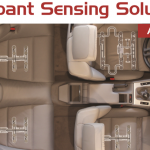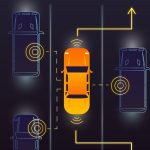How can technology save nearly 400 lives a day on Indian roads?
Need for passenger safety
India suffers most due to unsafe transportation, where more than 470,000 people are injured and around 150,000 killed in a year. This translates to over 400 deaths per day! It is a huge challenge and a pressing need to reduce this colossal loss.
World over, the issue of passenger safety is being addressed through the two-pronged approach of Increased Awareness and Strict Regulations.
Source: Road Accidents in India, Ministry of Road Transport and Highways, Govt. of India
Passenger safety through NCAP consumer testing programs
One of the most successful initiatives for enhancing vehicle safety has been the New Car Assessment Program (NCAP). NCAP awards stars to car models based on numerous safety tests; and the safer the vehicle, the more stars it is awarded. In this way, the consumer can be made aware of vehicle safety differences. Since the launch of the Euro NCAP in 1997 and adoption of EU crash test standards, the occupant fatality rate across the EU has halved.
The 2020 vision for the Global NCAP is that all new cars should be fitted with airbags, Anti-Lock Braking System (ABS) and Electronic Stability Control (ESC) as standard features. The Global NCAP has gone to the extent of providing financial and technical support to NCAPs in emerging regions like South East Asia and Latin America. Global NCAP supported the ‘Safer Cars for India’ project aiming at raising consumer awareness and requirement for crucial safety features in India and acting as a stimulus for enhanced safety by car makers. It has been a major catalyst in the establishment of mandated new crash test standards in India from October 2017.
Passenger safety through Regulations
Governments around the globe have implemented strict regulations which have led to the development of safer vehicles. The United Nations (UN) are supporting the creation of uniform provisions across different countries, through harmonized regulations concerning the approval of safety features for cars. Globally, a successful approach has been to create awareness about safety features through NCAP first, and bringing them in as regulations later. However, the large number of deaths due to traffic accidents has made India prioritize car safety and to bring in crucial safety measures directly by way of regulations instead of first working to build awareness through NCAP etc.
To start with, fitment of ABS was made mandatory for all the cars on sale from April 2019 onward. Further, from July 2019, five new safety features were made mandatory in all new cars sold in India namely – a driver-side airbag, a speed warning alarm, rear parking sensors, a manual override switch for cars with central door locking and seat-belt reminder alarms for both driver and co-driver.
Seat Belt Reminder – a vital feature for passenger safety
India was leading the way by being the first major automotive manufacturing country to make the front passenger Seat Belt Reminder (SBR) a legal obligation, ahead of countries such as Korea and Japan as well as the European Union (EU), who mandated this function only a few months later.
The driver and co-driver seat belt reminder is an audiovisual warning to remind both of them to buckle up. In case of the front co-passenger seat, the SBR warning should be activated only when it is made sure that the seat is occupied by a person and not some other inanimate object, such as a box or a bag, etc. Otherwise the audiovisual SBR warning can become an annoyance. Therefore, occupant detection sensors become a vital part of the SBR system.
Solutions from IEE Sensing for occupant detection
IEE Sensing has been developing and manufacturing innovative and cutting-edge automotive sensing solutions for more than 25 years. IEE is a global leader in Occupant Detection Sensing for SBR, working closely with car makers around the world and has equipped more than 400 million vehicles worldwide with solutions to either detect occupants or classify them.
Please do share your comments and insights below!
For more information, queries and feedback, please feel free to write to us at response@quanzen.com





